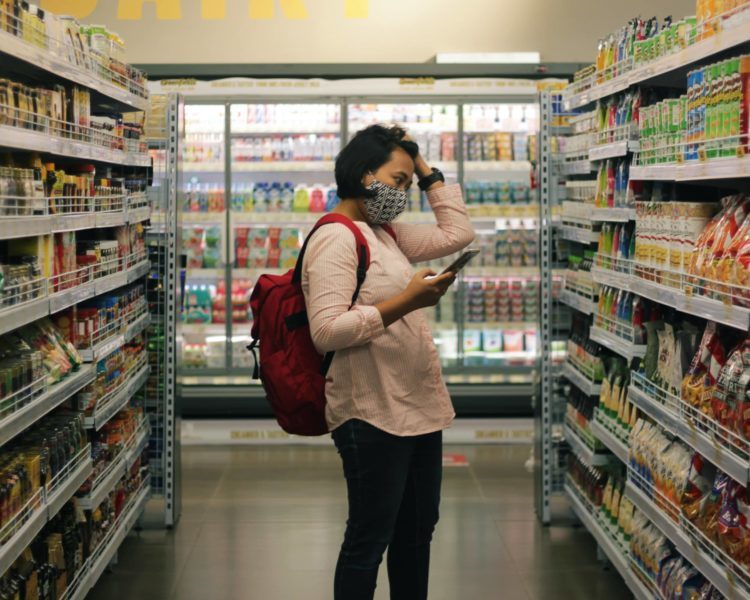Thrive
It’s ‘the inflation you’re not supposed to see’

Tampa Bay’s inflation rate paced the nation’s again in May – and in addition to rapidly increasing prices on goods, experts are now warning consumers to keep a keen eye on the volumes and sizes of their favorite products.
Earlier this month, the Bureau of Labor Statistics reported Tampa’s inflation rate continues to increase, hitting 11.3% and topping the list of U.S. metro areas. The national rate for May rose to 8.6% year-over-year, the highest level since 1981, but the overall cost of essentials is not the only thing residents should keep in mind when creating shopping lists.
Florida Chief Financial Officer Jimmy Patronis recently sounded the alarm about “shrinkflation,” the practice of reducing a product’s size while maintaining its price point.
“Understandably, companies are doing what they can to keep their doors open as the supply chain remains a disaster and the cost of ingredients for products increase,” said Patronis in a statement. “This trend, however, is not only bad for businesses, but it is unfair to consumers.
“As the nation continues to be impacted by an unsettled economy, I suspect there to be more issues like shrinkflation to appear, and that’s why I am urging Floridians to start saving and spending your money wisely to prepare for the long road ahead.”
Officials with Dunedin-based Achieva Credit Union are also monitoring the increasing prevalence of this hidden form of inflation. Tasha Cohen-Glynn, community outreach liaison for Achieva, said the practice has increased over the last several months, especially in grocery stores.
Cohen-Glynn said inflation comes and goes, and people must find a way to adapt. While sharp increases in prices like those seen since the fall of 2021 stand out and can discourage consumers from buying a product, shrinkflation occurs in small increments that are difficult to notice unless someone is “really paying attention.”
“As consumers, you run into a store, you buy what you need, and you leave,” she said. “Well, it’s a little different now.”

Tasha Cohen-Glynn, community outreach liaison for Achieva, called shrinkflation “inflation’s sneaky twin.”
Companies, said Cohen-Glynn, are repackaging goods instead of further raising prices. The same item one typically buys may now be a little smaller, perhaps a few ounces less at a time. The changes are often subtle, like making products smaller in multipacks than those sold individually or repurposing packaging, so the difference in weight is hard to notice.
She said reducing portions is relatively common with food and beverages during periods of high inflation, but it now extends to other essentials like toilet paper and toothpaste. For example, Business Insider reported that Walmart’s Great Value paper towels dropped from 168 sheets per roll to only 120, while the price remained the same.
“Shrinkflation is the inflation you’re not supposed to see,” said Cohen-Glynn. “It’s inflation’s sneaky twin.
“That’s the point I heard – and it’s true – because you don’t really notice it.”
Cohen-Glynn said she recently began checking products she buys from local stores. While her preferred brand of toothpaste “only” decreased by about a half ounce, the difference equates to 15 fewer uses for the same price.
She added that her box of tissues has dropped from holding 264 to 244, a subtle difference that adds up, especially when buying products in a region that leads the nation in inflation.
While Cohen-Glynn called shrinkflation uncomfortable for her and area consumers, she understands the companies’ thought process.
“All the rates around us are rising; inventory is rising,” she said. “Everything is rising. Manufacturers don’t want to cut into their profits, so as a result, we have to just pay more – and this is kind of the way they’re doing it.
“Instead of raising the prices on us, they’ll just give us less food.”
Tips to mitigate shrinkflation
While everyone is feeling the pinch, Cohen-Glynn did offer some helpful tips for local consumers.
Rather than just making a grocery list, she said to make a grocery budget. Determine the amount you typically spend, then list the items according to size and price. She said some online and mobile applications, like Instacart and Publix, have helped her to make lists and track purchases, and they can also offer rebates.
She noted that credit unions often provide online classes for those struggling to create a budget, and Achieva offers free, virtual courses quarterly.
Cohen-Glynn said it is also crucial to “do the math.” Pay attention to the unit prices instead of just grabbing what appears to be the same package. She added that she shops around and compares unit prices from one store to the next.
While she realizes buying in bulk may not fit into everyone’s budgets, buying larger quantities can also offset the effects of shrinkflation. Store brands can also save a consumer money, and she said to stock up when you see a sale, especially on buy-one-get-one-free offers – after evaluating the cost per unit or serving.
Last on Cohen-Glynn’s list of tips is to review spending habits every week or two and adjust your budget accordingly.
“Review the cost per ounce and unit pricing carefully,” she reiterated. “I think that would help.”








monah
June 29, 2022at9:30 am
Manufacturers and other businesses (including shareholders) don’t want any cuts made into their profits, but they sure don’t mind the cuts into ours (the consumer). Inflationary times should be an everybody-takes-a-hit situation; the burden shouldn’t be put entirely on the consumer; then we could split difference.